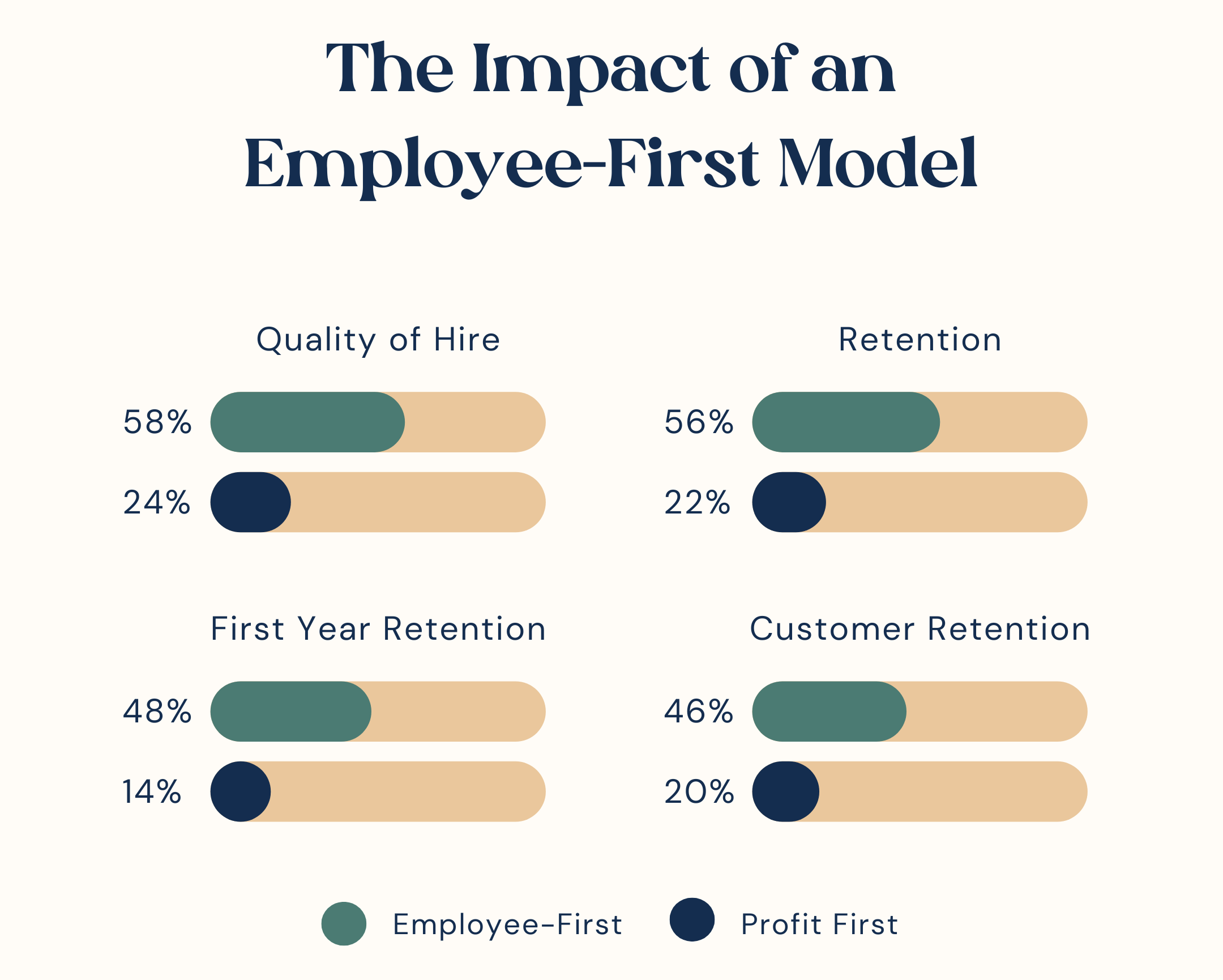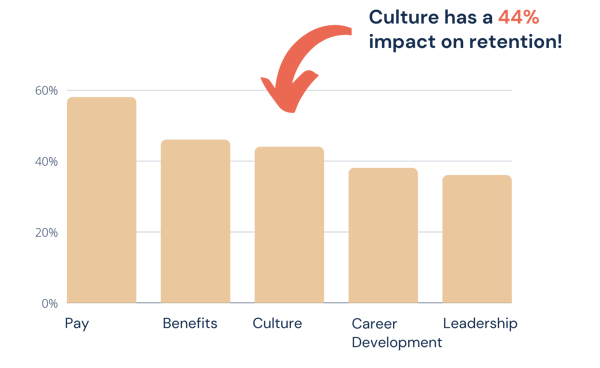The events of the past two years have reshaped the future of work and the relationship between the employer and employee.
Companies are facing intense pressure to both recruit and retain talent, compounded by a labor shortage and the Great Resignation. At the same time, employees are looking for companies that value their time and provide opportunities for growth and belonging. The pendulum has shifted, and today’s market is employee-driven.

Companies that put the employee first have a competitive advantage. They see improvements to recruitment and retention strategies, including quality of hire, retention, and customer retention.
Start with Pay, Benefits, + Culture
Every organization has a culture. Culture lives in the behaviors and mindsets that support our values. Culture also guides day-to-day decisions and interactions (of every person) both within and outside an organization and how those all support the business strategy. Culture has the power to influence a candidate’s decision to join a company and an employee’s decision to stay with a company.

Elevate Voices
Incorporating feedback opportunities and the employee voice makes the process more engaging and personal. Employees need an opportunity to provide their voice and concerns. By not including employee feedback in company culture or talent initiatives, employers are further distancing themselves from their workforce.

Prioritize Safety, Psychological Safety
Although 49% of employers say that employee safety is their top priority, nearly 40% of employees do not feel safe returning to work.
When asked what companies are doing to ensure safety, most companies are focusing on physical safety, and few are focused on psychological safety. Most companies are frequently communicating with employees about safety, but few are taking action. Less than half of companies are doing enough to ensure psychological safety.
-1.png?width=600&height=303&name=Untitled%20design%20(2)-1.png)
Making the Shift
These elements of humanity require organizations to shift their view of how they attract, develop, and engage talent. Companies must be open and transparent about where they are in the process while empowering employees with the support they need in both their personal and professional lives.